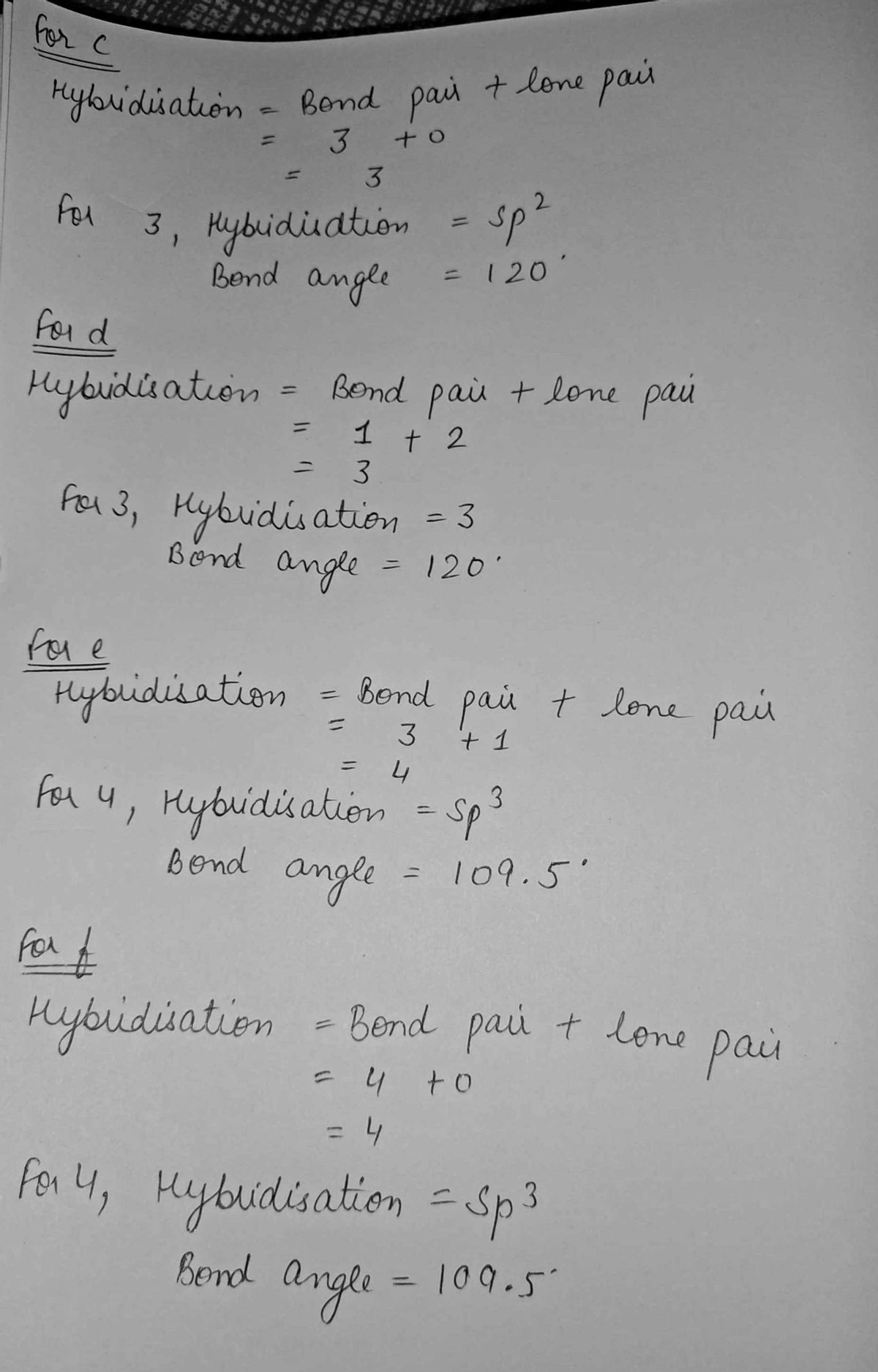Chemistry
10th Edition
ISBN:9781305957404
Author:Steven S. Zumdahl, Susan A. Zumdahl, Donald J. DeCoste
Publisher:Steven S. Zumdahl, Susan A. Zumdahl, Donald J. DeCoste
Chapter1: Chemical Foundations
Section: Chapter Questions
Problem 1RQ: Define and explain the differences between the following terms. a. law and theory b. theory and...
Related questions
Question

Transcribed Image Text:**Educational Content: Molecule Hybridization and Bond Angles**
In the displayed molecule, identify the hybridization and approximate bond angle of the labeled atoms:
- **a (Oxygen atom)**: Typically, oxygen in this context will exhibit sp³ hybridization, characterized by a bond angle close to 109.5°, due to its two lone pairs.
- **b (Carbon atom connected to oxygen and sulfur)**: Demonstrates sp³ hybridization, with a geometrical bond angle around 109.5°, owing to its tetrahedral arrangement.
- **c (Carbon atom double-bonded to another carbon)**: This carbon will be sp² hybridized, typical of alkenes, with an approximate bond angle of 120° due to its planar trigonal configuration.
- **d (Carbon atom with a lone pair)**: The presence of the lone pair indicates sp hybridization, associated with a linear geometry and a bond angle of approximately 180°.
- **e (Phosphorus atom connected to sulfur)**: This phosphorus is likely sp³ hybridized, suggesting a bond angle of about 109.5°, consistent with its tetrahedral shape.
- **f (Sulfur atom connected to phosphorus)**: With a similar sp³ hybridization, the sulfur exhibits a bond angle near 109.5°, being part of a different tetrahedral structure.
These hybridizations and bond angles are fundamental in predicting molecular geometry and behavior in various chemical environments.
Expert Solution
Step 1
Hybridization = Bond pair + Lone pair
By using this formula , we can calculate the hybridization of each atom.
For 2 , hybridization is 'sp' , Bond angle is 180
For 3 , hybridization is 'sp2' , Bond angle is 120
For 4, hybridization is 'sp3', Bond angle is 109.5

Step by step
Solved in 2 steps with 1 images

Recommended textbooks for you

Chemistry
Chemistry
ISBN:
9781305957404
Author:
Steven S. Zumdahl, Susan A. Zumdahl, Donald J. DeCoste
Publisher:
Cengage Learning

Chemistry
Chemistry
ISBN:
9781259911156
Author:
Raymond Chang Dr., Jason Overby Professor
Publisher:
McGraw-Hill Education

Principles of Instrumental Analysis
Chemistry
ISBN:
9781305577213
Author:
Douglas A. Skoog, F. James Holler, Stanley R. Crouch
Publisher:
Cengage Learning

Chemistry
Chemistry
ISBN:
9781305957404
Author:
Steven S. Zumdahl, Susan A. Zumdahl, Donald J. DeCoste
Publisher:
Cengage Learning

Chemistry
Chemistry
ISBN:
9781259911156
Author:
Raymond Chang Dr., Jason Overby Professor
Publisher:
McGraw-Hill Education

Principles of Instrumental Analysis
Chemistry
ISBN:
9781305577213
Author:
Douglas A. Skoog, F. James Holler, Stanley R. Crouch
Publisher:
Cengage Learning

Organic Chemistry
Chemistry
ISBN:
9780078021558
Author:
Janice Gorzynski Smith Dr.
Publisher:
McGraw-Hill Education

Chemistry: Principles and Reactions
Chemistry
ISBN:
9781305079373
Author:
William L. Masterton, Cecile N. Hurley
Publisher:
Cengage Learning

Elementary Principles of Chemical Processes, Bind…
Chemistry
ISBN:
9781118431221
Author:
Richard M. Felder, Ronald W. Rousseau, Lisa G. Bullard
Publisher:
WILEY